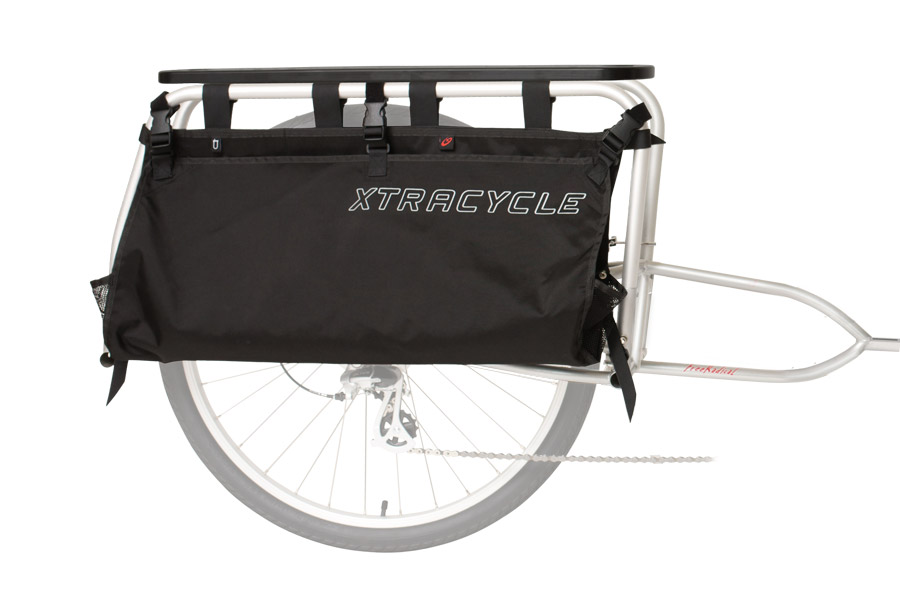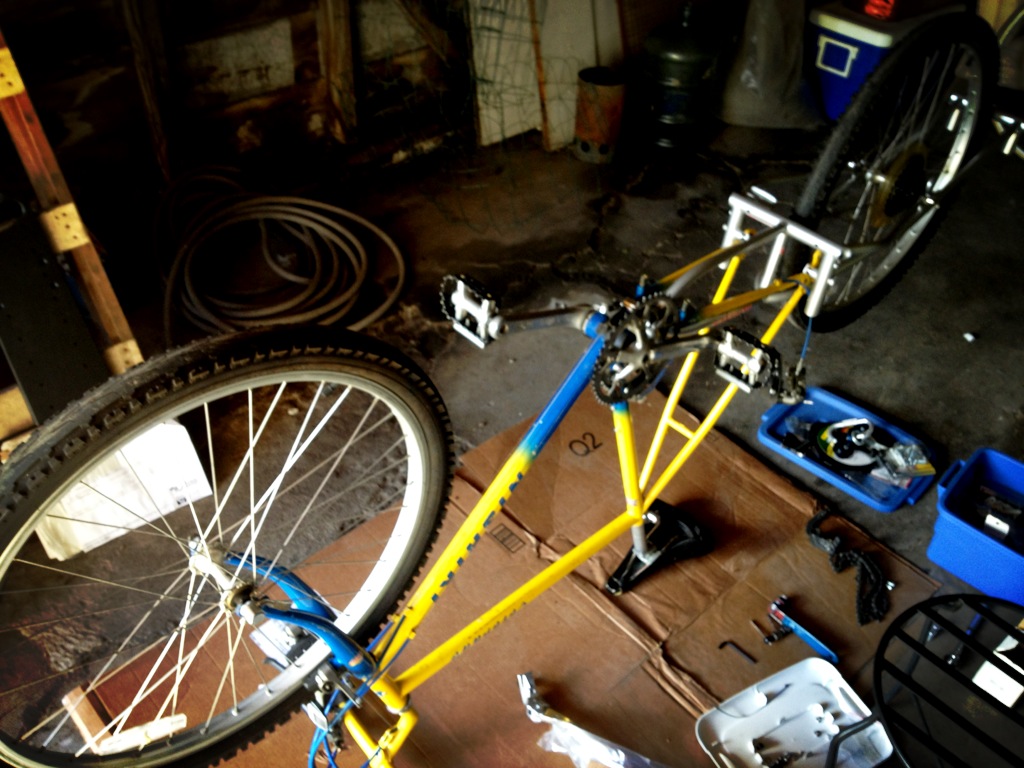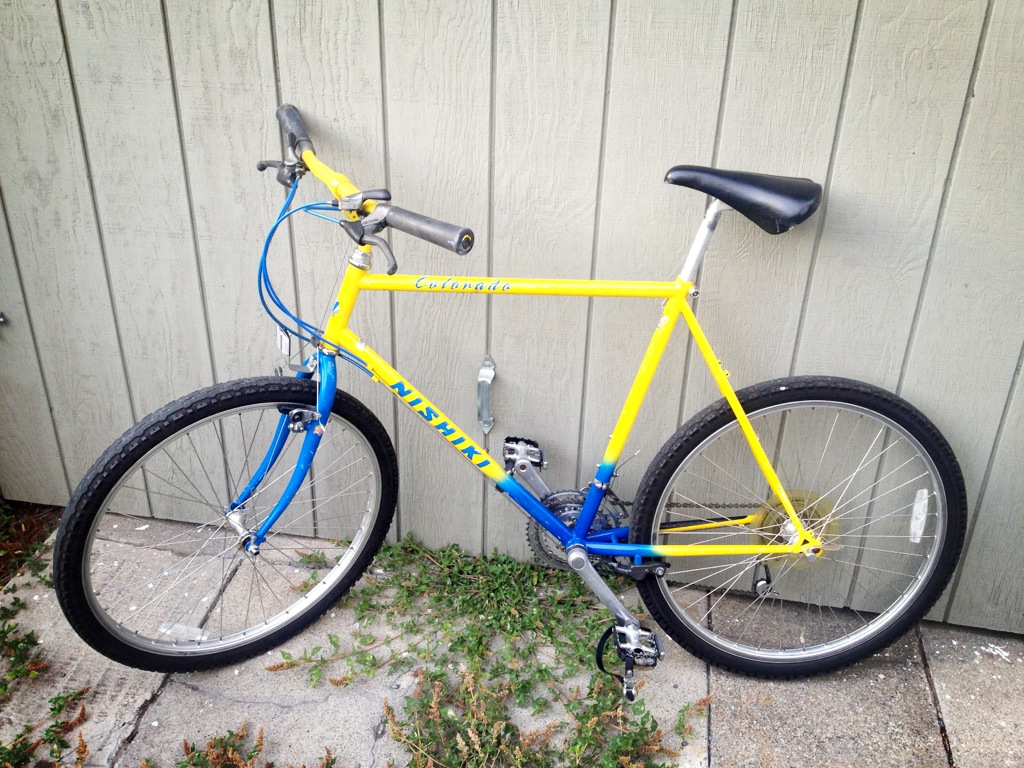tecznotes
Michal Migurski's notebook, listening post, and soapbox. Subscribe to ![]() this blog.
Check out the rest of my site as well.
this blog.
Check out the rest of my site as well.
Jan 28, 2014 4:41am
bike seven: building a cargo bike
This Nishiki Colorado is the seventh bicycle I’ve owned in my life (I’m not counting the blown-plastic bigwheel I rode in Ansonia, CT in 1982). In an effort to further stave off car ownership, I’ve outfitted it as a cargo bike using an Xtracycle FreeRadical X1:
I mostly use it for food shopping. With the cargo bags on either side, I can move a four-bag load of groceries the 2.3 mile distance between my house and the grocery store.
The conversion was relatively simple.
The Nishiki Colorado base came from Craigslist, where late 80s/early 90s mountain bikes are currently easy to find. This one was $90, in excellent condition. I had expected to get a beater bike and just use the frame, but the components on the bike were all in great shape. The wheels did require a bit of spoke adjustment, something that I chose to learn to do myself instead of asking a bike store to quickly do it. I bought the FreeRadical at Tip Top, a bike store near my house in North Oakland, for $500.
The FreeRadical extension attaches to the frame at three points: one bolt attaches near the kickstand mounting plate just behind the bottom bracket, and two additional bolts fit into the dropouts where the wheel normally connects. The connection is strong and stiff, and makes a single extra-long frame for the bike as a whole. The cargo extension has its own additional dropouts, and the rear wheel attaches to those about 18” back from where it would normally sit. Xtracycle includes detailed instructions and there are a few adjustments for different types of base bikes.
There were three challenging steps to completing the connection to the rear wheel: moving the rear brake, moving the rear derailleur, and lengthening the chain.
The FreeRadical requires a linear-pull brake, different from the center-pull cantilever brakes that might typically come with this kind of bike. The linear-pull has to be bought separately, and uses a slightly different length of cable to engage the brake. The bike store advised me to get a new brake lever to account for the difference in length, but I found that the “mushy” feel with the old lever was tolerable so I left it alone.
The rear derailleur is a fiddly part, and since it’s so much further to the back of this bike I also had to use an extra-long cable to attach it. The longer cables are usually marketed to tandem bike owners, and Tip Top had it included with the FreeRadical in the box. Adjusting a derailleur can be a pain, but fortunately the ones produced in past ~25 years are relatively standard and easy to work with. Once I had it all connected and set the high and low limits, it took about fifteen minutes of riding up and down the street with a screwdriver in my hand, stopping every few feet to adjust the derailleur indexing until it all clicked into place.
Lengthening the chain requires a bike chain tool, and you have to buy two normal-length chains and connect them end-to-end.
Here’s what the bike looked like when I first brought it home:
I’m happy with the goofy blue & yellow color, and I’m glad that the new brake and derailleur placement still let me keep the color-matched blue cable housings up at the front. I’ve taken it on BART once, and I didn’t attempt to move it up the stairs and used the station elevators instead. I got a few weird looks and comments on the bike.




Comments
Sorry, no new comments on old posts.